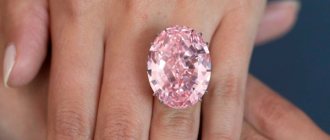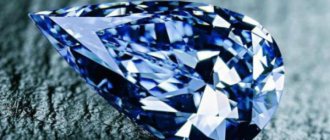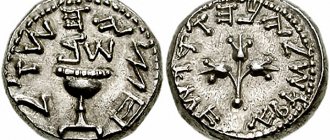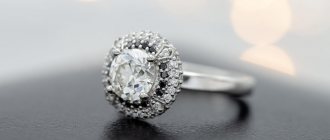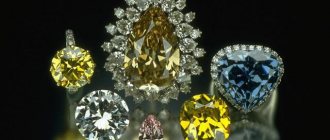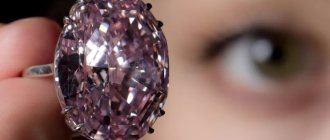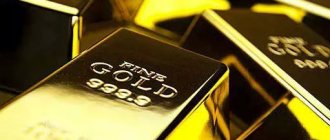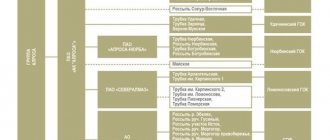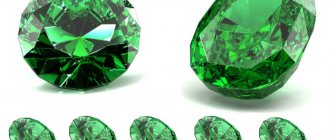About legislation
How to buy an unmounted diamond without breaking the law?Expert commentary
For most of our adult lives, the diamond industry of our country was separated from our fellow citizens by a reliable barrier of legislation: both an uncut diamond and a cut but unmounted diamond were classified as currency values. It was possible to buy a diamond without a setting only on the black market, and any buyer, as well as the seller, violated currency laws and could be subject to criminal prosecution (remember Galina Brezhneva’s well-known passion for diamonds). After the end of the socialist period, legislation changed, sometimes radically, sometimes gradually, and sometimes even now you can find various rudiments and atavisms of the “scoop” in laws and by-laws. In particular, Article 191 has still been preserved in the Criminal Code, providing for criminal punishment for “Illegal trafficking in precious metals, natural precious stones or pearls” https://www.garant.ru/main/10008000-022.htm Precious stones only in in recent years have ceased to be considered currency values (there is no mention of them in the current version of the law “On Currency Regulation and Currency Control”, adopted by the State Duma on November 21, 2003, as amended on December 30, 2015 https://www.consultant.ru/popular/currency /). But even today, many years after the start of the legal free circulation of dollars and other currencies in the hands of our fellow citizens, the state imposes a number of restrictions on the circulation of precious stones in the form of raw materials and in cut but unmounted form, in our case, rough and polished diamonds. Therefore, we offer an analysis of the current legislation in the field of precious stones, so that potential buyers have an idea in which case the purchase of a diamond is an absolutely legal transaction, and who is an absolutely legal seller of diamonds in our country.
Diamond Jewelry
In Russia there are no special restrictions on the turnover of finished jewelry. We can direct those who are interested in the general civil circulation of goods to the Civil Code of the Russian Federation (https://www.consultant.ru/popular/gkrf1/). The current law of the Russian Federation “On Precious Metals and Precious Stones” has the following provision in the preamble: The procedure for transactions by citizens (individuals) with jewelry and other household products made of precious metals and precious stones owned by citizens is not subject to regulation by this Federal Law ( private property). For the text of the law, see, for example, https://www.gemology.ru/zakon/1_30.htm Thus, a citizen of our country (individual) can purchase jewelry, including diamonds, own them and carry out any permitted law of the transaction. When purchasing jewelry in a store, you need to know that there is Russian Government Decree No. 55 of 1998, which states the “List of durable goods that are not subject to the buyer’s requirement to provide him free of charge for the period of repair or replacement of a similar product and a list of non-food products of adequate quality , not subject to return or exchange for a similar product of a different size, shape, dimension, style, color or configuration" According to this resolution, products made of precious metals, with precious stones, made of precious metals with inserts of semi-precious and synthetic stones, cut precious stones, cannot be returned to the store.
Unset Diamonds
Certified unmounted precious stones are considered to be jewelry, therefore, transactions with them can also be carried out by individuals. Relevant instructions are given in Government Resolution No. 1157 of November 25, 1995, which states: “Expand the list of transactions in the market with precious metals and precious stones, allowing the sale of platinum bars and products made from it on the territory of the Russian Federation, as well as the composition of participants these transactions, providing for transactions by individuals with gold, silver and platinum bars, certified diamonds and other cut precious stones.”
The legal basis for regulating the circulation of precious stones in Russia is established by the law “On Precious Metals and Precious Stones” of March 26, 1998 https://www.gemology.ru/zakon/1_30.htm. The law in question allows the sale of stones, including loose diamonds, to any person, including individuals (i.e. citizens). Article 2, paragraph 6 of this law contains an indication that “Precious metals and precious stones acquired in the manner established by the legislation of the Russian Federation may be in federal property, the property of constituent entities of the Russian Federation, municipal property, as well as in the property of legal entities and individuals . Owners of precious metals and precious stones exercise their right of ownership of precious metals and precious stones in accordance with this Federal Law, the Civil Code of the Russian Federation and the Law of the Russian Federation “On Currency Regulation and Currency Control.” As we have already indicated, the currency control law does not apply to precious stones since 2004. Article 20 contains provisions that stones can be sold to both individuals and legal entities: clause 5: “Precious metals and precious stones not sold as a priority to buyers listed in clause 5 of article 2 of this Federal Law and clause 4 of this article, including to buyers who refuse to purchase unique nuggets of precious metals, can be sold by the subjects of their mining and production to any legal entities and individuals, including through precious metals and precious stones exchanges operating in the Russian Federation.”
The rules for the sale of certain types of goods, approved by Government Resolution No. 55 of January 19, 1998, establish the following requirements for the sale of unmounted precious stones (we quote excerpts from Chapter VII): - The sale of cut diamonds made from natural diamonds and cut emeralds is carried out only with availability of a certificate for each stone or set (batch) of stones sold (Article 61) - Products made of precious metals and precious stones, as well as cut natural precious stones must have individual packaging (Article 65) - When transferring the purchased goods to the buyer, the person carrying out the sale, checks the presence on it of an imprint of the state hallmark of the Russian Federation and its quality, an imprint of the manufacturer's name (for Russian-made products), as well as a certificate for a cut natural gemstone (Article 66) - Along with the goods, the buyer is given a sales receipt, which indicates the name of the goods and the seller, sample, type and characteristics of the precious stone, article number, date of sale and price of the goods, signature of the person directly selling the goods, and certificates are also provided for purchased cut natural precious stones (Article 69).
Thus, any citizen can legally purchase certified loose gemstones. Since of all the precious stones today, Russian certification centers work only with diamonds, there are simply no other certified stones on the market. For more details, see the “Certification” section on our website.
We recommend that buyers, in case they suddenly have to prove the legality of ownership of a diamond, keep the certificate, the store receipt, and the individual packaging in which the diamond was purchased.
Finally, let's look at who may be a legal diamond seller under current law. Assay inspections maintain special records of organizations and individual entrepreneurs carrying out transactions with precious stones. Therefore, any company or entrepreneur must have a certificate of special registration with the Assay Office. Since the sale of both stones and finished products is not subject to licensing, registration with the Assay Office is the only specific requirement for companies and individual entrepreneurs selling precious stones.
How to invest in diamonds without getting scammed
Over the past 10 years, prices for diamonds weighing from 3 to 5 carats (namely, such stones are bought for investment purposes) have increased, according to the PriceScope agency, by approximately 27-30%. After a slight drawdown in 2015, the cost of stones, despite the crisis, is increasing. This is due to many factors. The main one is the reduction in raw material production around the world. Almost no new deposits are being discovered; old ones are gradually being depleted. Plus, there is now an aggressive buyer on the market - Indian companies. They buy any diamonds and don’t pay much attention to prices. The fact is that diamonds have become a convenient subject of collateral in Indian banks. And the cost of cut diamonds is almost equal to the cost of rough diamonds. There can be only one conclusion from this: in the near future the price of diamonds will rise sharply. Moreover, the price of this investment asset will not depend on the economic situation in the world.
Diamonds have many advantages over other alternative investments (such as real estate). Firstly, low price volatility. Of course, the price of stones changes, but sharp drawdowns have not happened for a long time. Secondly, it is convenience: diamonds can be quickly purchased, easily transported (a matchbox can hold stones worth tens of millions of dollars) and stored.
Unfortunately, it is simply impossible to buy and sell diamonds in Russia at a realistic price. To begin with, most diamonds come to us from abroad (India, Israel, Belgium). Russia practically does not have its own cutting industry, which means that we do not have “our own” diamonds. The price of imported stones includes import duty and VAT (42%). The resulting cost is then multiplied by 1.7 (the overhead costs of large importing companies) and then multiplied by another 2 (this is the 100% profit margin that retailers typically factor into the price of diamonds).
Advertising on Forbes
All over the world there is a price list for the main groups of diamonds from Rapaport. And any seller or buyer always understands the estimated cost of a particular stone. In Russia there is a certain bulletin from the Ministry of Finance, the prices in which are significantly higher than the global ones. For the same reason, there are practically no diamonds weighing more than 2 carats on open sale. In addition, in Russia there are no clear tools for further resale of stone. Pawn shops will give you, at best, 25-30% of the price you paid in the store.
But the main problem is different.
Most retailers deliberately inflate the actual characteristics of diamonds. This happens for many reasons, ranging from the desire to make excess profits, to simply the desire to show lower prices than competitors. How is this even possible? The fact is that almost not a single diamond sold in Russia has an international GIA (Gemological Institute of America) certificate. This is the only independent laboratory that operates with government subsidies. Other laboratories and evaluation centers often deliberately inflate the characteristics in order to attract more clients - diamond sellers, who are the main source of income for them. Any laboratory can carry out an assessment by reference to its own standards. That is why only GIA can guarantee against falsification of stone characteristics. But instead of a GIA certificate, the store will show you a document from some laboratory.
What happens if, after purchasing, you send the stone to GIA (this is not difficult to do), receive a real estimate and, indignant, want to return the diamond? The store will say that the seller does not evaluate and will forward the claims to the laboratory. And the laboratory will assure you that they evaluated the stone according to their own standards. Only the employees of this company know what these standards are. I myself have repeatedly seen and heard how the seller came to such appraisers and asked them to write on the certificate what he needed. Meanwhile, you will not find a single professional who would question the GIA certificate. The documents of this institute are considered the standard in the world of precious stones and the ultimate truth.
First of all, I advise you to leave Russia and go to one of the “diamond” cities of the world - Tel Aviv, Antwerp or Mumbai. It is in these cities that the bulk of diamonds are processed and, accordingly, it is here that prices for diamonds are lowest. In Israel, thanks to the almost complete absence of duties and taxes on export-import transactions with stones, the world's largest diamond exchange is located. It’s worth looking for access to companies engaged in cutting; it’s not at all difficult to do. Buying an investment diamond in a regular store is actually throwing away money, since the markup at retail outlets, although not as large as in Russia, is still quite significant. And in companies that do diamond cutting, they will sell you a stone at the price of the professional market.
It is quite easy to protect yourself from buying a diamond with falsified characteristics: you should always ask for a GIA certificate. And if the seller shows you a paper from another laboratory or offers a discount without showing you a certificate, feel free to look for another partner. Do not take into account the argument that small stones do not issue a certificate - this is complete nonsense. GIA estimates stones at 0.3 - 0.5 carats.
After purchasing a stone, the question will arise - where to store it.
The stone can be left in the cash box of a collection company right at the airport (this will cost from $100-200 per year). Or in the pre-customs area of the airport - in Geneva or Shanghai. Having concluded an agreement with collectors, you can at any time demand delivery of the stone to the city you need (including Moscow).
